calsfoundation@cals.org
Women's Suffrage Movement
After the Civil War, Arkansas leaders began advocating women’s right to vote. Women’s suffrage clubs started to organize, and an Arkansas women’s suffrage movement emerged. These suffragist leaders lectured at meetings, campaigned on street corners, and lobbied the Arkansas legislature for a women’s suffrage law. This campaign ended in 1920 with the Nineteenth Amendment to the U.S. Constitution giving women the right to vote.
An Arkansas law proposing women’s suffrage was initially introduced by Miles Ledford Langley of Arkadelphia (Clark County), a representative to the Arkansas Constitutional Convention of 1868. On February 11, 1868, the Arkansas Gazette reported that he made a motion that “all citizens 21 years of age, who can read and write the English language, shall be eligible to the elective franchise and entitled to equal political rights and privileges.” The next day, he delivered an address to the Arkansas House of Representatives on the need for women’s suffrage. “Mr. Langley spoke earnestly but his remarks elicited much laughter,” reported the Arkansas Gazette on February 15. Langley wrote to Susan B. Anthony on March 5 and apologized that the 1868 Arkansas Constitution did not give a “guarantee to woman her God-given and well-earned rights of civil and political equality.”
Articles on “Women’s Rights” soon began to appear in the Arkansas Gazette. On December 31, 1869, the paper printed an invitation to Phoebe Couzins, a suffragist, to speak in Little Rock (Pulaski County) on women’s suffrage. Couzins, a lawyer from Missouri, spoke on the need for influential women in politics, as reported in the Arkansas Gazette on January 5, 1870. Arkansas suffragists turned to national publications for support, and their letters appeared in the National Woman Suffrage Association (NWSA) newsletter, Woman’s Journal of Boston, Massachusetts.
On September 10, 1881, Lizzie Dorman Fyler reported to the Woman’s Journal that the Arkansas Woman Suffrage Association (AWSA) had been organized. Fyler was its president. A lawyer from Massachusetts, Fyler made her home in Eureka Springs (Carroll County). She reported to the Woman’s Journal on October 22, 1881, that the “Arkansas Woman Suffrage Association has been organized for the purpose of securing such legislation as shall secure to woman all the rights and privileges which belong to citizens in a free republic.” By October 9, 1885, she reported that the AWSA had disbanded. Fyler died on November 11, 1885.
In 1888, Clara McDiarmid, an officer in the Woman’s Christian Temperance Union (WCTU), organized the Arkansas Equal Suffrage Association (AESA) in Little Rock. McDiarmid was a native of Noblesville, Indiana, and a lawyer in Kansas City, Missouri. Unable to practice law in Arkansas, she used her law degree experience to counsel women on their legal rights. McDiarmid kept the AESA going by writing articles for the Little Rock women’s suffrage magazine, Woman’s Chronicle (which was founded by Kate Cunningham), and attended National Woman Suffrage Association meetings. She died on July 22, 1899, leaving the AESA without leadership. The suffragists soon dispersed.
By 1911, suffragists organized again. Seventy-five women met for the purpose of organizing the Political Equality League (PEL). Mary Fletcher, the youngest daughter of John Gould Fletcher Sr. and sister of the well-known suffragist Adolphine Fletcher Terry, was elected president. While the PEL sought “to secure equal suffrage,” its members were also “expected to take an interest in questions of legislative, municipal and home affairs.”
The PEL’s main concern was the proposed Arkansas constitutional amendment for women’s suffrage. Public hearings were held on March 15, 1911, with speakers such as Minnie U. Rutherford, “who made forceful appeals for the [women’s] right to vote.” The amendment passed in the Senate and went on to the House on April 12, 1911. State Representative George L. Grant spoke in favor of the resolution, stating that the enfranchisement of women was long overdue. The House opposition, however, came from the liquor interests, which held that women “should not be contaminated with politics” and that women belonged in the home.
The liquor industry was alarmed by the Woman’s Christian Temperance Union (WCTU). An active organization, the WCTU had supported temperance in Arkansas since 1879 and, since 1888, had viewed women’s suffrage as a way to achieve prohibition. Minnie Rutherford, Lizzie Dorman Fyler, and Clara McDiarmid were among many suffragists who were members of the WCTU. At the House hearing on the pending legislation for prohibition versus local option, WCTU representative Rutherford spoke on the benefits of a state-wide prohibition law. The women’s suffrage amendment of 1911 ultimately failed.
The Arkansas women’s suffrage movement gained momentum as women’s suffrage leagues spread from Little Rock to cities such as Hot Springs (Garland County), Pine Bluff (Jefferson County), Malvern (Hot Spring County), and Fayetteville (Washington County). In October 1914, a state convention in Little Rock officially organized the Arkansas Woman Suffrage Association (AWSA). The president, Alice Ellington, asked “all equal suffrage sympathizers for contributions to aid the fight to have a constitutional amendment submitted by the legislature.” In 1915, the Political Equality League joined with the Arkansas Federation of Women’s Clubs (AFWC), and at its convention, the AFWC advocated a women’s suffrage resolution. Once again, a women’s suffrage amendment was proposed for the Arkansas Constitution. Rutherford spoke to the hearing committee, and Florence Brown Cotnam addressed the House. This time, the amendment passed. However, four amendments were to be voted on, but according to state law, only three could go before the public. Therefore, the women’s suffrage amendment failed again.
In 1916, Alice Paul, president of the National Woman’s Party, visited Little Rock to organize a branch of the National Woman’s Party. Carrie Chapman Catt, president of the National American Woman Suffrage Association (NAWSA), also came to Arkansas to campaign for women’s suffrage. Altogether, women’s suffrage membership increased significantly, according to the October 17, 1916, Arkansas Democrat.
With the Arkansas women’s suffrage movement still growing in popularity, on February 7, 1917, state representative John A. Riggs of Hot Springs introduced in the Arkansas House a women’s primary suffrage bill. It allowed women to vote in primary elections. The Arkansas House voted favorably 71–19, and the Senate voted 17–15 in favor. Governor Charles Hillman Brough noted that he favored women’s enfranchisement and considered it an honor to sign the measure. Finally, a women’s suffrage bill passed and made Arkansas the “first non-suffrage state in the Union” to permit women to vote in primary elections.
This new responsibility caused the Arkansas women’s suffrage movement to modify its structure. In early 1917, the “Arkansas Woman Suffrage Association reorganized along Democratic Party ward and precinct lines to become the Arkansas Equal Suffrage Central Committee” (AESCC) with Alice Ellington as chairwoman. Reorganizing was essential to “teach women how to work with political parties.” In Little Rock, suffrage schools taught “methods of agitation.” When the United States entered World War I, suffragists joined in the war effort by selling Liberty Bonds, working for the Red Cross, and doing other jobs to help win the war.
In August 1917, Florence Brown Cotnam became chairwoman of the Equal Suffrage State Central Committee, and with influence by Carrie Chapman Catt, redirected the suffrage leagues to focus on the federal amendment to the U.S. Constitution. In November, the AESCC was joined by the Little Rock branch of the National Woman’s Party to campaign for a federal women’s suffrage amendment.
Statewide primaries were held in May 1918, and more than 40,000 women voted. As a result, over fifty female delegates were elected to the Democratic State Convention. The convention included a women’s suffrage plank in its platform, endorsed “unlimited suffrage for women,” and supported a federal women’s suffrage amendment. During 1918, another attempt was made to include women’s suffrage in a proposed Arkansas Constitution, but the constitution failed to receive a majority in the popular vote.
Governor Brough, in his 1919 (second term) inaugural address, endorsed a women’s suffrage amendment to the Arkansas Constitution, as well as the ratification of the federal women’s suffrage amendment. In June 1919, Congress passed the federal women’s suffrage amendment and submitted it to the states for its ratification. A special session was required for the Arkansas General Assembly to meet and to ratify the amendment. Cotnam and members of the AESCC started writing letters to legislators; many were enthusiastic and promised to be there and vote.
On July 28, 1919, Brough called a special session for the purpose of ratifying the Nineteenth Amendment. The vote passed 74–15, making Arkansas the twelfth state to ratify the Nineteenth Amendment. Women filled the Arkansas Capitol carrying yellow banners reading, “Votes for Women.” The Nineteenth Amendment became law on August 26, 1920.
As a result of the Nineteenth Amendment, Arkansas witnessed the transformation of the AESCC to the Arkansas League of Women Voters (ALWV), with Florence Brown Cotnam president. The ALWV created citizenship schools to inform the new voters on the responsibilities of government and their voting rights. The league continued to work for legislation giving additional rights to women.
For additional information:
“Arkansas Women: Race, Reform, and the Right to Vote.” Special issue, Arkansas Historical Quarterly 79 (Autumn 2020).
Arkansas Women’s Suffrage Centennial Project Virtual Exhibit. University of Arkansas at Little Rock Center for Arkansas History and Culture. http://ualrexhibits.org/suffrage/ (accessed August 20, 2020).
Cahill, Bernadette. Alice Paul, the National Woman’s Party and the Vote: The First Civil Rights Struggle of the 20th Century. Jefferson, NC: McFarland, 2015.
———. Arkansas Women and the Right to Vote: The Little Rock Campaigns, 1868–1920. Little Rock: Butler Center Books, 2015.
———. “Stepping outside the Bounds of Convention: Adolphine Fletcher Terry and Radical Suffragism in Little Rock, 1911–1920.” Pulaski County Historical Review 60 (Winter 2012): 122–129.
———. “‘Young people think women always had the right to vote’: Josephine Miller and the Arkansas Woman Suffrage Campaign.” Pulaski County Historical Review 61 (Spring 2013): 11–15.
Craig, Jared B. “Political Animal: Florence Brown Cotnam and the Arkansas Women’s Suffrage Movement.” MA thesis, University of Arkansas at Little Rock, 2017.
Harper, Ida Husted, ed. The History of Woman Suffrage. Vols. 2, 4. N.p.: National American Woman Suffrage Association, 1922.
Henderson, Calee M. “‘They Made Their Voices Heard!’ The Last Drive of the Women’s Suffrage Movement in Arkansas.” MA thesis, University of Arkansas at Little Rock, 2014.
Kyzer, Paula. “Promoting Political Responsibility: The League of Women Voters of Pulaski County.” Pulaski County Historical Review (Fall 1991): 50–60.
Schnedler, Jack. “So Close, yet So Far.” Arkansas Democrat-Gazette, November 5, 2018, pp. 1D, 6D.
Taylor, Antoinette Elizabeth. “The Woman Suffrage Movement in Arkansas.” Arkansas Historical Quarterly 15 (Spring 1956): 17–52.
Thompson, Kristen L. “From the Parlour to the Polls: Arkansas and the Women’s Suffrage Question.” MA thesis, University of Arkansas, 2003.
Whayne, Jeannie M. “World War I and Woman’s Suffrage in Arkansas.” In The War at Home: Perspectives on the Arkansas Experience during World War I, edited by Mark K. Christ. Fayetteville: University Press of Arkansas, 2020.
Paula Kyzer Taylor
Arkansas History Commission
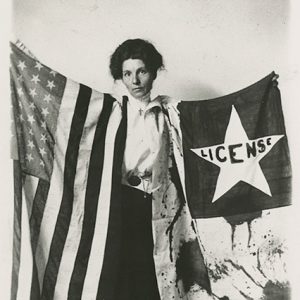 Bernie Babcock, Suffragist
Bernie Babcock, Suffragist 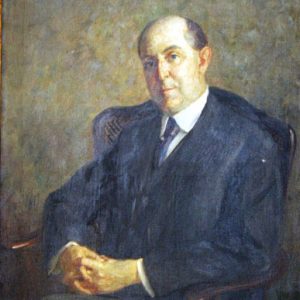 Charles Brough
Charles Brough 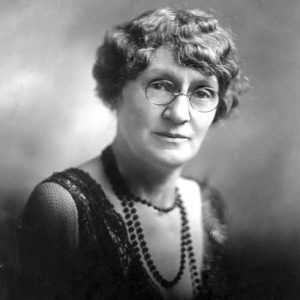 Florence Cotnam
Florence Cotnam 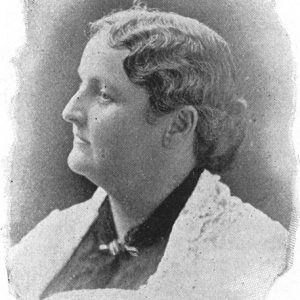 Clara McDiarmid
Clara McDiarmid 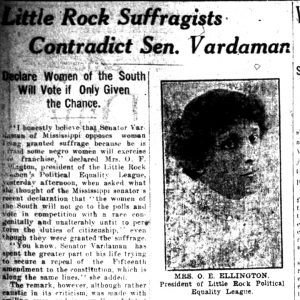 Political Equality League Article
Political Equality League Article 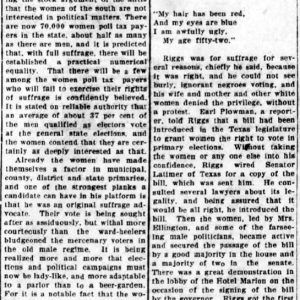 Suffrage Article
Suffrage Article 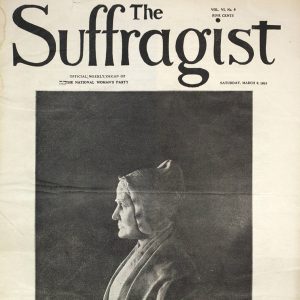 The Suffragist
The Suffragist 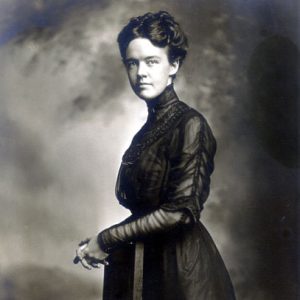 Adolphine Fletcher Terry
Adolphine Fletcher Terry  Julia McAlmont Warner
Julia McAlmont Warner 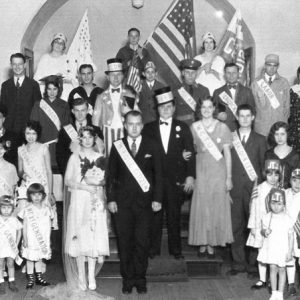 WCTU Banquet
WCTU Banquet 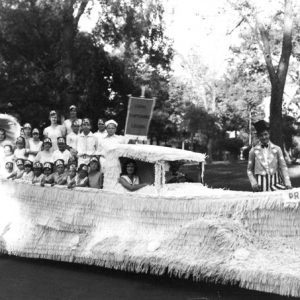 WCTU Parade
WCTU Parade 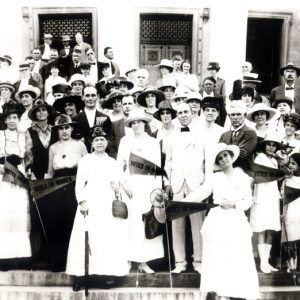 Women's Suffrage Rally
Women's Suffrage Rally 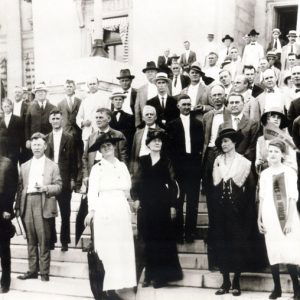 Women's Suffrage Rally
Women's Suffrage Rally 



Comments
No comments on this entry yet.